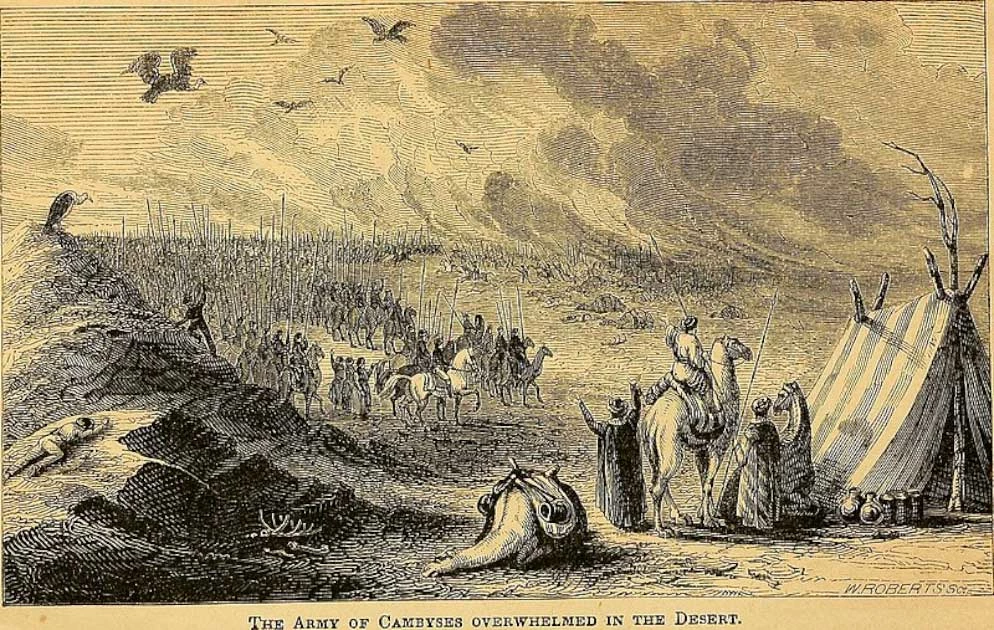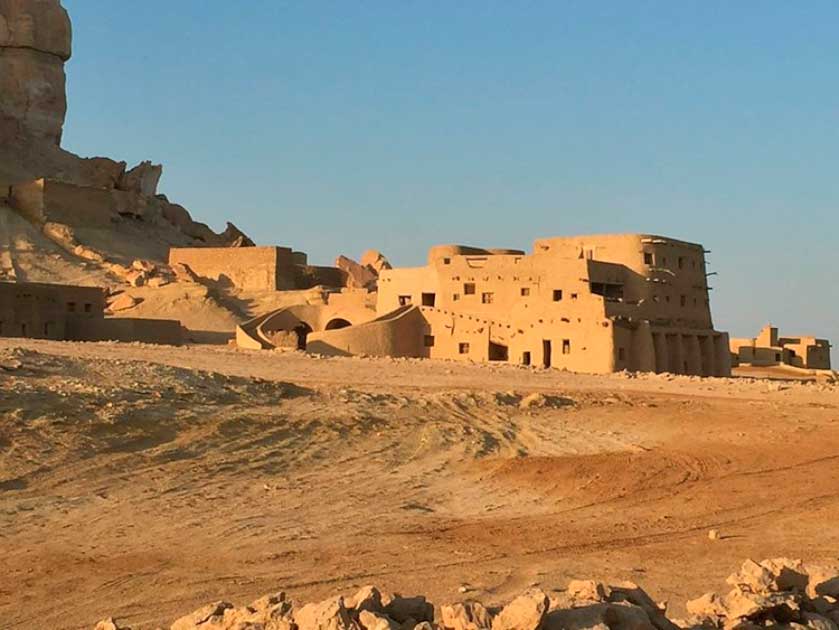King Cambyses II, ruler of all Persia and son of the legendary Cyrus the Great, dispatched an army of 50,000 men 2,500 years ago to attack a local rival. What happened next would become one of the great mysteries of the ancient world: the entire army vanished, and has never been seen since.
Some believe the story of the army to be fiction, a popular myth. However archaeologists have long searched to uncover what really happened with the 50,000 warriors who were sent by Cambyses. Certainly the area they were crossing was inhospitable, but the routes were known and it would truly have taken a monumental disaster to lose the entire force.
What happened out there in the desert?
The Army of Cambyses
In 524 BC, Cambyses II had sent the army on a mission to target and enslave the occupants of the Temple of Amun, situated at Siwa oasis, known as “Ammonians”. The Persian king wanted to strengthen his claim to Egypt so that he could legitimately obtain the position of Pharaoh.
Cambyses had started by asking politely, but the powerful priests of the Oracle of Amun were not willing to provide such legitimacy to the king, which angered him tremendously. In order to tackle the situation and stamp out their resistance, Cambyses sent his men so that they could burn down their great temple of Zeus-Ammo.
The large army embarked on the mission and marched through the Sahara towards the Siwa oasis, deep in the desert. They wanted to teach the rebellious priests a lesson so that they could be shown their place.
It would take seven long days in the desert for the army to reach the oasis, believed by historians to be the one named “El-Kharga”. But they never arrived: the army of 50,000 men vanished while marching towards their destination.
- Sandringham Company of the Norfolk Regiment
- Farini’s Great Discovery: Is there a Lost City of the Kalahari?
This would have been nothing less than catastrophic for Cambyses, and given the lack of aftershocks to his rule and authority some have questioned whether the event ever occurred. However, as no trace of the warriors could be found the truth of the tale became a moot point, and the searches for the soldiers stopped.
What Could Have Happened to Them?
While we cannot be certain where the army is, there are explanations out of antiquity which offer clues. According to Herodotus, an ancient historian from Greece, a deadly and strong wind arose from the south when the army was almost halfway across the desert, engulfing them in a great sandstorm.

The intensity of the sandstorm was so massive that the entire troop of 50,000 warriors was covered by it, and they had no time to react or escape the situation. Even though the troop comprised thousands of men, they stood no chance against mother nature.
The force of the natural weather event was so powerful that the entire troop of army vanished underneath the sand, and they were never to be found again. The trace of the men was lost and no one ever heard from them, neither the Egyptians, the Persians or the Greeks.
As the trace of the men was lost completely, soon they even vanished from the memory. The task that the army had in hand was quite challenging, and they failed to realize the challenge that they could encounter in the natural setting.
Of course, Herodotus himself was guessing, offering the most reasonable explanation he had. But with the environment itself so challenging, the army could had simply become lost and disappeared into the vastness of the Sahara.
Uncovering the Mystery
Archaeologists have actually uncovered some pieces of evidence that shed light on the tragedy that struck the large army of Cambyses. While conducting research activities near the area where the army was believed to have disappeared, researchers came across several elements including human remains along with other items such as a half-buried pot.
- Attack of the Dead Men: Were there Zombies at Osowiec Fortress?
- The Vanished Legion: What Happened to the Roman IXth?
Another key discovery that was made involved the existence of a large rock which could have been used as a shelter against sand storms. Several items of ancient warfare were located with the help of a metal detector, such as numerous arrow tips and bronze daggers, that suggested they belonged to the era of Cambyses. Could these be the remnants of the army, all that remains in the desert?
The tragic fate of the army makes one wonder how nature can serve as a catalyst and change the destiny of people. The loss of the Army of Cambyses, which is considered to be one of the greatest archaeological mysteries of all time, was solved when it was found that the cause of the disappearance of 50,000 warriors was a sandstorm. Far from being a fictional army, scientists were confident enough based on their findings to announce that they had solved the mystery in 1996.

Their conclusion matched Herodotus: the army had indeed been swallowed by a sandstorm during the journey. Nothing now remains of the 50,000 men who set out to the Siwa oasis.
Even though Cambyses witnessed considerable success as a king and he was able to bring almost the entire Egyptian region under his control, the sudden disappearance of his army would undoubtedly have been a major setback. It is a testament to his authority as ruler that he was able to weather this disaster.
The sudden disappearance of his massive troop of warriors in the middle of the desert had intrigued archaeologists for many decades. Recent research findings have revealed that the huge army of Cambyses consisting of thousands of men faced a natural hurdle in the form of a massive sandstorm. They could not complete their journey as they were engulfed by sand on their way.
Top Image: Herodotus wrote that the entire Lost Army of Cambyses was swallowed by a sandstorm. Source: Robert Kneschke / Adobe Stock.
By Bipin Dimri